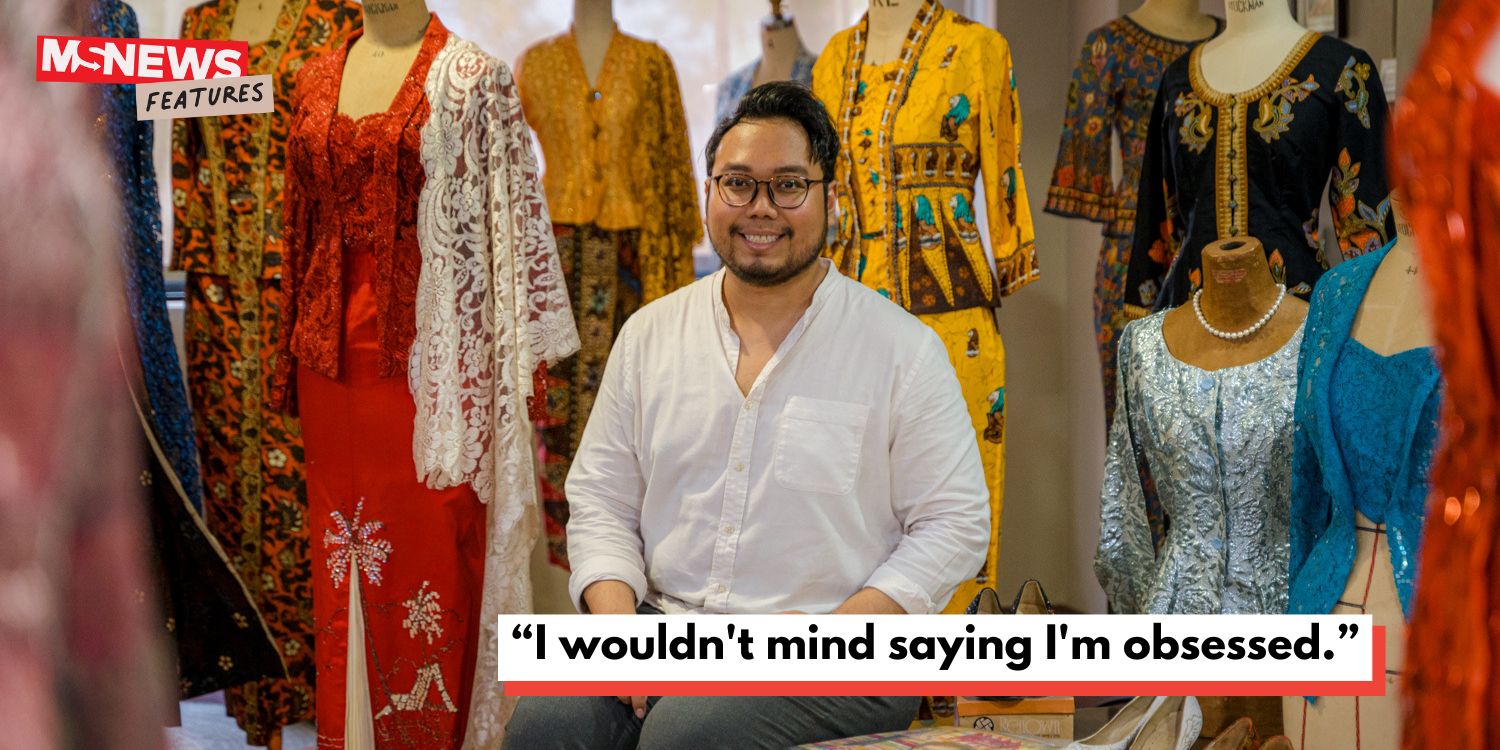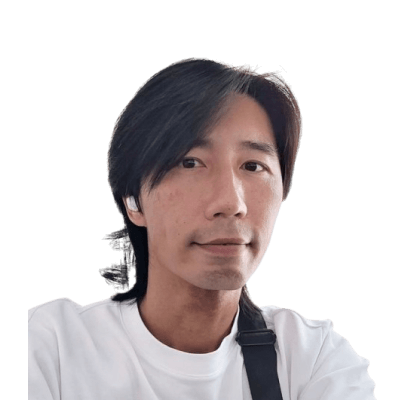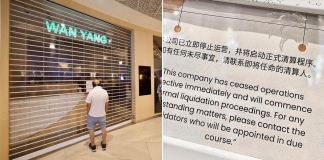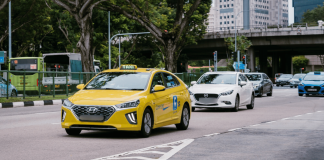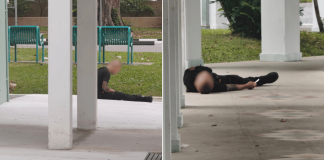MS Features: The kebaya collector with more than 200 pieces to his name
“I wouldn’t mind saying I’m obsessed,” said Sufiyanto Amat Sopingi, 35, a kebaya maker and collector.
“I’m not obsessed with the piece itself, but due to my background in fashion, I’m always curious with regards to the pattern making and construction, because there’s so many different cuts of the kebaya.”
With over 200 pieces in his collection and no signs of slowing down, Sufiyanto shares with MS News what fuels his passion for this timeless garment.
Kebaya collector’s mother rejected conventional careers
Born and raised in Singapore, Sufiyanto attended a boarding school in Australia. After national service, he studied men’s tailoring at the London College of Fashion, part of the University of the Arts London.
When asked what led him to pursue fashion design, he explained that originally planned to study law in university.
It was his mother that advised him against it. She had also rejected his second career choice — becoming a politician.

However, his mother fully supported his choice to go into fashion though his father was initially unsure.
“Dads being dads,” said Sufiyanto by way of explaining.
His father taught him how to use a sewing machine
Sufiyanto said: “My mum may be my muse, but much of my talent comes from my dad, who was the first person to introduce me to a sewing machine.”
He recalled how, back in their old house, his father would make the curtains for their windows.
His father also taught him how to use a sewing machine.
Despite his uncertainties with his son’s career choice, Sufiyanto’s father continued to support him.
When he was studying in London, his parents went to the department store chain John Lewis & Partners to buy him a domestic sewing machine on orientation day.
His father then carried the brand-new sewing machine all the way to his apartment.
“They showed me that they believed I could achieve greater things,” he said, his voice trembling slightly as his eyes welled up with tears.
Achieve great things he did, as Sufiyanto ended up in Paris working in French ateliers with acclaimed fashion designers Elie Saab and Stéphane Rolland.
Kebaya collector is the guardian of treasured garments
His fashion career would take another path when he returned to Singapore in mid-2016 after a fulfilling stint overseas.
It was his mother’s baju kurungs from the 1970s that started his obsession with collecting traditional garments.
“Years back I told her to keep the two sets for me,” said Sufiyanto.
However, the garments — which were wedding gifts from his father’s family — had been misplaced.
After searching the entire house for the missing pieces, Sufiyanto eventually found them stacked in a corner.
“That moment marked the beginning of my journey as a collector,” he recalled with a smile.

“It was important for me to document my own family pieces as well.”
Sufiyanto shared with MS News that his collection of kebayas is mostly from Singapore, Indonesia, and Malaysia, and that a part of his collection is from donors.
He enthusiastically shared how Noora Sulaiman — one of his memorable donors — spent three months searching for him, hoping to donate her late mother’s cherished kebayas from the 1960s.
Knowing how much her mother loved and cared for her kebayas, Noora wanted to ensure they found a home where they would be appreciated.
She eventually donated six pieces to Sufiyanto’s collection.
He said: “Most donors who reached out to us simply wanted someone to appreciate the kebayas that once belonged to their mothers.”
The kebaya collector’s favourite kebaya
When asked about his favourite kebaya, Sufiyanto paused for a moment before pointing to a striking red and white piece.

This eye-catching kebaya once belonged to the late Nona Asiah, a celebrated Singaporean singer and actress in the 1950s.
She was also a Cultural Medallion recipient and an inductee of the Singapore Women’s Hall of Fame.
What makes the set more special is that it was designed and handmade by Nona Asiah herself.
Sufiyanto shared that the music icon’s family had donated more than 25 pieces of kebayas that spanned from the 1950s to the 1970s.
“It’s my favourite because Nona Asiah was the fashion designer to the seniwatis (actresses & songstresses) of Jalan Ampas during the golden age of Malay cinema in the 1950s and 60s,” he added.
Kebaya collection a part of Singapore’s heritage and history
The treasures in Sufiyanto’s collection do not end there.
One stand-out piece is the 1960s Merlion Hand-Printed Batik Kota Bahru Kebaya, which he acquired from the U.S.

Created by the Singapore Tourism Board in 1964, the Merlion symbolises the nation’s growing tourism sector while paying tribute to its maritime heritage.
With the body of a fish and the head of a lion, this mythical creature has since become an iconic symbol of modern Singapore.
Sufiyanto said of the merlion kebaya: “The colours in the 1960s were a bit interesting. There were very questionable colour choices with the yellow, brown and green.”
According to him, the colour and design choice was a product of the era experimentation in the 1960s.
“Personal preferences aside, we still think it is important to have this in our collection as it’s part of Singapore tourism and fashion history,” he added.
Other kebayas from Singapore include a hand-stamped orange Batik kebaya set with white and black flowers and a 1960s piece by a local designer — Antoinette Singapore (Kebaya Batik Kotabahru).

The iconic, but now defunct, department store John Little stocked the batik kebaya set in the 1960s.
Sufiyanto estimates that recreating any of these three kebayas today would cost between S$300 and S$500, depending on textile quality and tailoring.
Back in the day, it would have cost around S$90 to S$100.
With Singapore’s 60th birthday happening this year, Sufiyanto also hopes to put together a small exhibition of his pieces.
Not in this for profit
When asked if he would be willing to let go of any kebayas in his collection, Sufiyanto replied: “I wouldn’t, but if an institution or museum approached me, I’d be very open to it because it involves educating people.”
He added that he is unlikely to part with any of his pieces if an individual approaches him and asks to buy one of the kebayas for themselves.
Sufiyanto does not foresee slowing down when it comes to growing his collection of kebayas.
As space is a constraint, he is currently looking for suitable spaces where he can store and hopefully showcase his extensive collection.
“The promotion of the kebaya doesn’t rely solely on the wearers,” said Sufiyanto.
“There is an entire ecosystem of designers and makers, and for us, we showcase our research on culture and heritage so people can understand and appreciate the garments they are wearing.”
Sufiyanto does this through the Instagram fashion account Kebaya Societé — which he co-founded in March 2021 with Muhammad Afiq Juana, a fashion trend analyst.
Filling a gap with Kebaya Societé
The duo started the page after noticing a lack of platforms discussing fashion in the Malay and Indonesian worlds.
They began collecting kebayas about two years before launching Kebaya Societé, and the page — which now has close to 29,000 followers — became the ideal platform to showcase their collection.
“We felt that it was important for us to showcase the different and various types of kebayas that exist in our region, made from a variety of textiles in different lengths and silhouettes,” said Sufiyanto.
“Even within the Malay community, there’s a misconception that Malay Muslims cannot wear the kebaya because it’s tight, sheer, or see-through.“
Sufiyanto explained that the earlier forms of the kebaya were not tight. The fit of the kebayas was quite relaxed, but as fashion trends evolved, they became more figure-hugging.
“Some of our followers tell us that they had forgotten they could wear the kebaya again, not just the tight, short ones, but all the other styles that exist,” he said.
“It makes me really happy to empower them.”
Kebaya added to UNESCO cultural heritage list
On 4 December 2024, the kebaya was officially added to UNESCO’s Representative List of the Intangible Cultural Heritage of Humanity.
As it turns out, Sufiyanto played a role in the landmark moment — as a part of the local community network, Kawan Kebaya (Friends of Kebaya).
The network consists of more than 50 kebaya stakeholders, who contributed their knowledge and views through focus group discussions and workshops during the nomination process.
Even with the successful inscription, members of Kawan Kebaya continue to actively promote the garment.
“I am very happy to hear the news of the successful inscription because kebaya is a living heritage in Southeast Asia,” said Sufiyanto.
“With the UNESCO inscription, it is further recognised on a global scale as a garment that’s synonymous with our region.”
Also read: Little Girl Dresses Up In SIA Sarong Kebaya To Greet Actual Cabin Crew At Changi Airport
Little Girl Dresses Up In SIA Sarong Kebaya To Greet Actual Cabin Crew At Changi Airport
Have news you must share? Get in touch with us via email at news@mustsharenews.com.
Featured image adapted from MS News.
